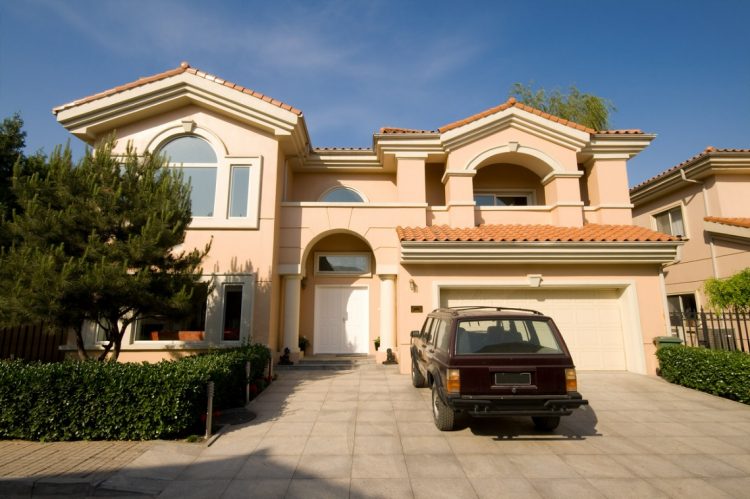The American Dream has long been associated with homeownership, and for many, the ultimate expression of that dream is a spacious, luxurious home. However, not all large houses are created equal, and one term that has gained notoriety in recent years is the “McMansion.”
So, what exactly is a McMansion, and how does it differ from a large house?
What is a McMansion?
A McMansion is a colloquial term used to describe a large, often ostentatious, poorly designed home that has become increasingly common in suburban areas across the United States.
The term “McMansion” is a portmanteau of “McDonald’s” and “mansion,” which is meant to convey the idea that these homes are mass-produced and lack the architectural character and quality associated with traditional mansions.
Here are some commonplace characteristics of McMansions:
- Size: They are generally characterized by their sheer size. They are often much larger than the average American home and typically boast excessive square footage, sometimes upwards of 4,000 square feet or more. They are often constructed as spec houses in luxury developments.
- Over-the-top design: These houses tend to feature architectural designs characterized by excess. They may have over-the-top facades, excessive rooflines, and a hodgepodge of architectural styles, often lacking the cohesive aesthetics of traditional homes.
- Cookie-cutter aesthetics: One of the most significant criticisms of this housing choice is their lack of individuality. They are often built using templates or cookie-cutter designs, leading to rows of homes that look strikingly similar. In this respect, they are nothing like mansions or estates, which are unique in every way.
- Poor proportions: McMansions frequently suffer from poor proportions and a lack of harmony in their design. Significant, out-of-place elements like oversized columns, towering entranceways, and immense garages can create a discordant appearance.
- Lack of quality: To cut costs and maximize square footage, many compromise on the quality of materials and craftsmanship. This can lead to issues with durability and maintenance.
- Excessive amenities: They often have excessive amenities, like home theaters, gyms, multiple kitchens, and large foyers. While some may appreciate these features, others see them as unnecessary extravagances.
- Pricing: In most markets, these homes are at the upper end of the market. They are the antithesis of the common types of affordable housing.
Differences between large houses vs McMansions
Now that we’ve established these properties let’s explore the differences between a large house and a McMansion.
Design aesthetics:
One of the most apparent differences between large houses and McMansions is their design aesthetics. Large houses can be just as spacious but tend to have a more restrained and cohesive architectural design. They often follow a specific architectural style, such as Colonial, Craftsman, or Mediterranean. They maintain a sense of proportion and balance.
In contrast, McMansions are known for their haphazard mix of architectural elements and lack of architectural integrity.
Size and functionality
Large houses, while spacious, are typically designed with a focus on livability and functionality. The rooms are well-proportioned and designed to meet the needs of the occupants.
McMansions, on the other hand, often prioritize size over functionality. They may have disproportionately large rooms or areas that serve little practical purpose, contributing to a sense of wasted space.
For example, massive two-story family rooms and foyers with balconies. You might find an enormous ensuite bathroom bigger than some master bedrooms in smaller homes.
Individuality and customization
Large houses often offer more opportunities for customization and individuality. Homeowners can work with architects and builders to design a home that suits their specific needs and tastes. It is one of the pros of customized new construction.
In contrast, a McMansion is often built from pre-designed plans with limited room for customization. It leads to a sense of uniformity and a lack of personalization.
Neighborhood context
Large houses, when built in upscale neighborhoods, tend to blend in with the area’s architectural character. They may complement the existing homes and contribute positively to the neighborhood’s ambiance.
On the other hand, McMansions can disrupt a neighborhood’s cohesion by standing out as excessive and incongruent with the surrounding homes.
Material quality
Another significant difference is the quality of materials and craftsmanship. Large houses often prioritize high-quality materials and workmanship to ensure long-term durability. In contrast, a McMansion may compromise on materials and construction quality to keep costs down.
Final thoughts
While both large houses and McMansions offer ample living space, they differ significantly in design, aesthetics, functionality, and neighborhood context.
Large houses are often characterized by their attention to architectural detail, functionality, and customization. For purists, a McMansion lacks these features. Instead, it’s all about excessive space regardless of how out of proportion it is to the overall property.
The choice between the two ultimately depends on individual preferences, budget constraints, and the desire for a home that reflects one’s unique tastes and needs.












